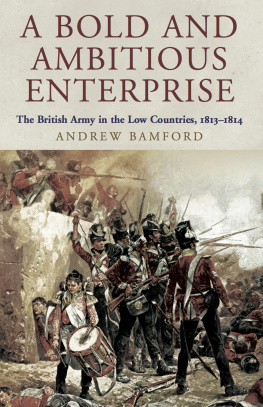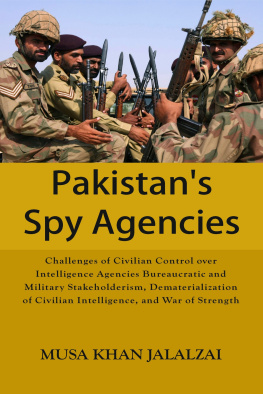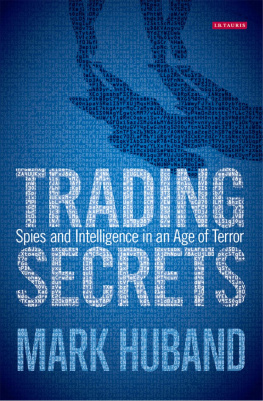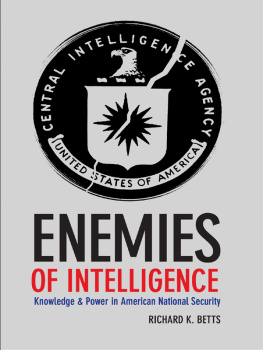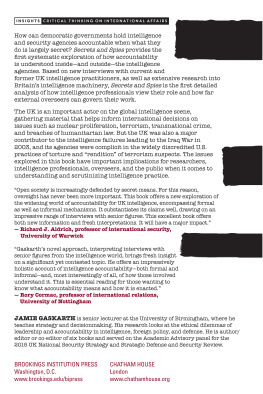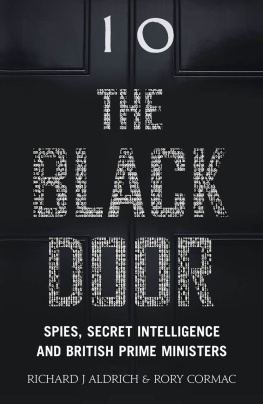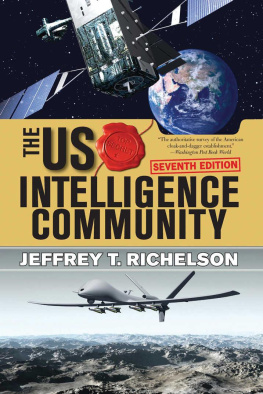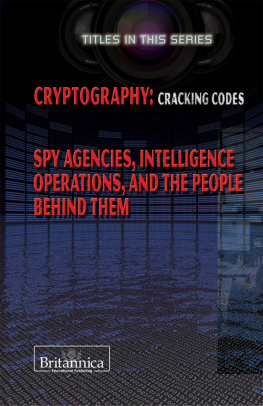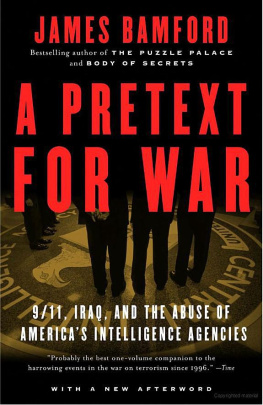
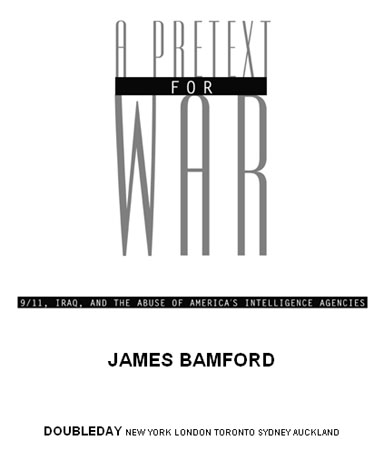
CONTENTS
To Mary Ann
And to my father, Vincent
In memory of my mother, Katherine
And to Tom, Paula, and Christina
Whoever fights monsters should see to it that
In the process he does not become a monster.
And when you look long into an abyss
The abyss also looks into you.
Friedrich Nietzsche, Beyond Good & Evil: Prelude to
a Philosophy of the Future, trs. W. Kaufmann,
(New York: Vintage, 1989), Part 4, p. 89.
While nothing is easier than to denounce the evildoer,
nothing is more difficult than to understand him.
Fyodor Mikhailovich Dostoevsky
Allow the President to invade a neighboring nation, whenever he shall deem it necessary to repel an invasion, and you allow him to do so, whenever he may choose to say he deems it necessary for such a purposeand you allow him to make war at pleasure.... If, today, he should choose to say he thinks it necessary to invade Canada, to prevent the British from invading us, how could you stop him? You may say to him, I see no probability of the British invading us but he will say to you, Be silent; I see it, if you don't.
Representative Abraham Lincoln, letter to William H. Herndon, February 15, 1848. (The Collected Works of Abraham Lincoln,
ed. Roy P. Basler, vol. 1, 1953, pp. 45152)
PART I
DESTRUCTION
CHAPTER 1
ROME
Tech. Sgt. Jeremy Powell's heart started pounding and he quickly raised his hand and started waving it vigorously to get attention. He sat in a quiet pool of emerald light, staring at a matrix of slowly moving white dots, cryptic flashing letter-number combinations, lines going in all directions, and green circles that would form at the center and then expand outward, like a ripple from a stone tossed in a morning pond. Represented by every dot was a small cross-section of humanity, packed in an aluminum tube and traveling in the air near the speed of sound. Jeremy Powell was sitting in front of a glowing radar screen, scanning the skies over America's East Coast for any indication of attack, invasion, or airborne drug dealers.
This green room, like a leprechaun's lair, was the Operations Command Center of Huntress Controlthe Air National Guard's Northeast Air Defense Sector. Located in the sleepy town of Rome in central New York, it was part of the North American Aerospace Defense CommandNORADa relic from the days of bomb shelters, air raid warnings, and fears of invading Russians. Besides being centrally located and free from major urban electromagnetic interference, Rome was an appropriate venue for America's twenty-first-century lookouts. It was the place where the American flag first flew in the face of battle, during the American Revolution at Fort Stanwix, located in what is now the center of the city of Rome. And it was the home, and final resting place, of Francis Bellamy, author of the Pledge of Allegiance.
Lt. Col. Dawne Deskins, her eyes now adjusted to the eerie light that greeted the start of her dozen-hour shift, saw Jeremy Powell's hand waving. As the airborne control and warning officer at the center, she was expecting more activity than usual this morning because of the drill. September 11, 2001, was the fourth day of a weeklong exercise code-named Vigilant Guardian. It was designed to create a fictional crisis affecting the United States and test the network of radar watch stations around the country. Like a rerun of an old movie, the scenario involved Russian bombers flying over the North Pole in attack formation. The Rome command center was responsible for monitoring more than half a million square miles of airspace, from the MontanaNorth Dakota border to the coast of Maine down through South Carolina. Included were the skies over New York City and Washington, D.C. Should a crisis develop, the radar specialists could pick up the phone and alert fighter pilots at National Guard units at Burlington, Vermont; Atlantic City, New Jersey; Cape Cod, Massachusetts; and Duluth, Minnesota.
A moment earlier, Powell had taken a call from Boston Center. Watch supervisor, I have a possible hijack of American 11 heavy, a Boston military liaison with the Federal Aviation Administration (FAA) told him. Recommend notifying NORAD. Powell passed the information on to Deskins. Part of the exercise, Deskins thought to herself, until the direct phone line to the FAA began flashing. It was 8:40 A.M.
Forty-one minutes earlier, at 7:59 A.M., American Airlines Flight 11 had lifted off from Boston's Logan International Airport with eighty-one passengers and eleven crewmembers, and knifed into the crystal-blue sky. Good morning, said the captain to the air traffic controllers disappearing quickly below. American 11 heavy with you passing through, ah, two thousand for three thousand. As the flight climbed steeply from two to three thousand feet, window-seat passengers could clearly see the glint of sunlight reflecting off the gold dome of the State House high atop Beacon Hill. Good morning, replied a controller at Boston departure radar. Traffic ten o'clock, two miles, maneuvering.
Early September and a good time to be traveling. The weather had broken and it was clear and cool in the Northeast. The thunderstorms of summer were past, as was the hectic Labor Day holiday. And September 11 was a Tuesday, statistically one of the least busy travel days of the week. For the passengers aboard Flight 11, less than half full, it meant empty middle seats in which to stretch out for the long trip to Los Angeles. Normally capable of carrying up to 269 passengers, the twin-engine Boeing 767a mechanized marvel made up of 3.1 million partswas one of the long-haul workhorses for American Airlines. Sloshing around in the wings and other cavities was up to 10,000 gallons of highly explosive fuel.
We have him in sight, replied the pilot. At fifty, John Ogonowski had been flying for half of his life, first in the Air Force at the end of the Vietnam War, and, beginning in 1979, with American. Earlier that morning, he had left the bucolic tranquility of his 150-acre farm in the northern Massachusetts town of Dracut. A sweeping expanse of fields and fruit trees, dotted with farm machinery and stonewalls, it was where the round-faced Ogonowski, a fourth-generation farmer, found peace. Down from the clouds, he spent his time laboriously plowing, cleaving, and harrowing the soil. When his hands were dirty and his pants were filthy, he was always pretty happy,'' said his brother, James.
As the plane passed over the small Massachusetts town of Gardner, about forty-five miles west of Boston, the smell of coffee was starting to drift through the cabin. Flight attendants were just beginning to prepare the hot breakfasts of omelets, sausages, and fruit cups. Seated in business class, in seat 8D, was thirty-three-year-old Mohamed Atta, clean-shaven and in casual clothes. Instead of lowering his food tray, he pulled his small black shoulder bag from under the seat in from of him, withdrew a hardened plastic knife and a box cutter, and stepped into the aisle. At that same moment, as if choreographed, four other men assigned to Row 8 also rose and headed toward the front of the plane.
Sitting in front of a twenty-seven-inch, high-resolution Sony TV console, the controller could see Flight 11's key informationits altitude, direction, and identifying number. John Ogonowski heard again the crackle of a traffic controller in his earphones. AAL11, your traffic is at, uh, two o'clock, twenty miles southwest-bound, MD-80, the controller said, alerting Ogonowski to a McDonnell Douglas MD-80 nearby.
Next page


